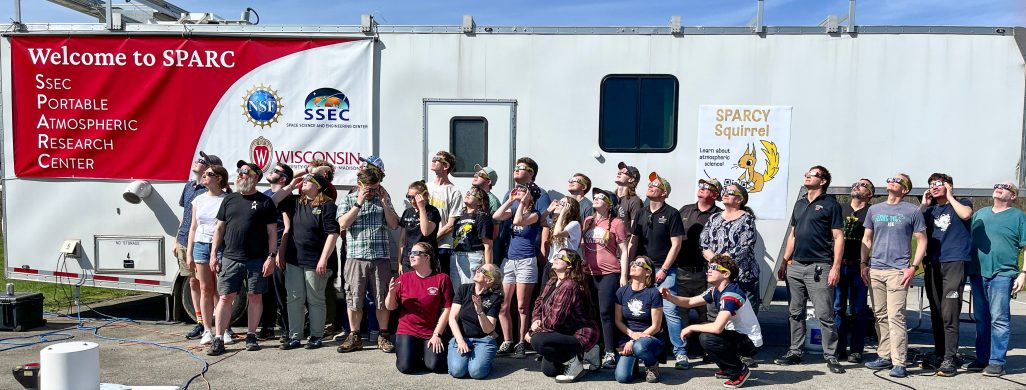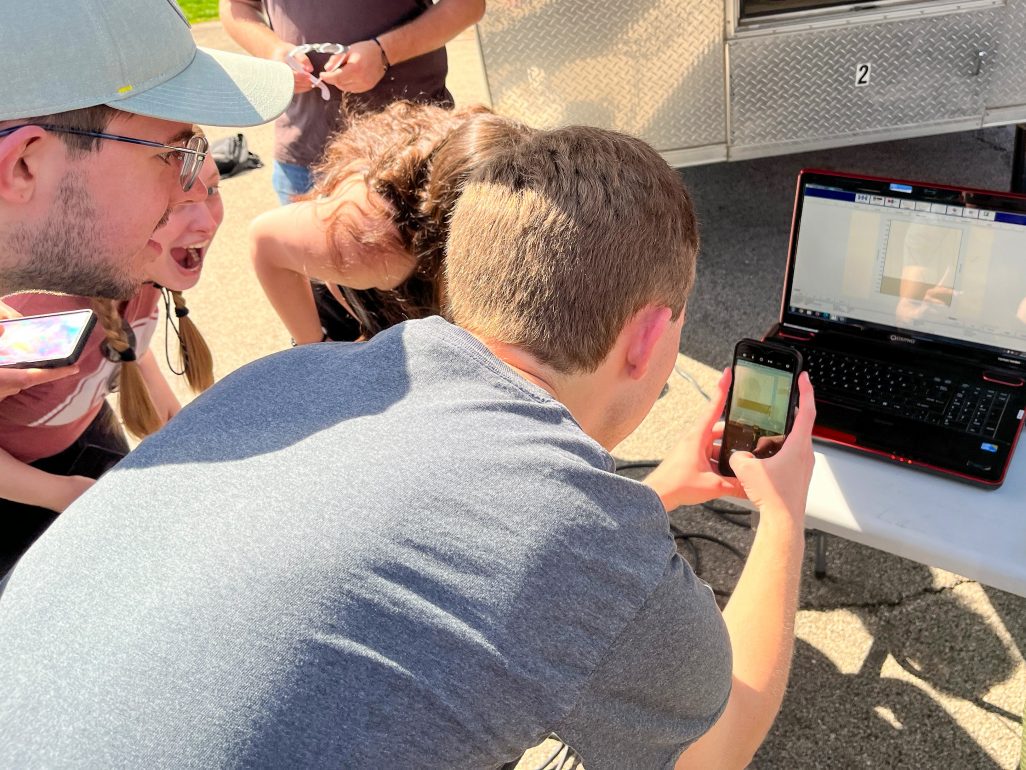SPARC mobile research lab provided hands-on learning experience for students during total solar eclipse
Total solar eclipses happen about every 18 months somewhere on Earth, but the total solar eclipse that occurred on April 8, 2024 in North America will be the last to cross over the continent until the 2040s. Nearly 32 million people live in the path of totality and millions more traveled to witness this extraordinary astronomical event.
Researchers at the University of Wisconsin-Madison Space Science and Engineering Center were among these travelers. They brought with them a mobile research laboratory called the SSEC Portable Atmospheric Research Center, or SPARC. The SPARC was set up at Earlham College in Indiana to witness the 3 minutes and 52 seconds of darkness while collecting atmospheric data.

The SPARC’s AERI spectrometer, HSRL lidar, Doppler lidar instruments and surface meteorology station studied the structure of temperature, water vapor and winds in the atmosphere, as well as clouds, aerosols and the effect of solar radiation on the evolution of the boundary layer and the formation of clouds. Researchers also launched weather balloons and conducted drone flights.
The SPARC is a remote sensing suite that is part of the National Science Foundation’s Community Instruments and Facilities program; scientists and universities can write proposals to use SPARC or other facilities. Kevin Goebbert, Professor of Meteorology at Valparaiso University in Indiana, utilized this NSF CIF program to bring the SPARC to his undergraduate students and give them hands-on work with field research.
“The use of the facility was an amazing experience for the students and faculty/staff. The opportunity presented an authentic field work research experience where the students had to actively participate in the set-up, monitoring and break down of all equipment,” wrote Goebbert in an email. “They even had the experience of having to overcome a power loss, which also meant a temporary loss of data that is all too real with doing big field campaigns. It was cool to see your students taking the lead on a critical observation platform for studying the eclipse.”

After the total eclipse, Goebbert’s class analyzed the boundary layer conditions that changed from pre-eclipse through totality and then the rebound response afterward. Goebbert’s class will analyze eclipse data to better understand atmospheric processes. In the coming semesters, Goebbert’s classes will continue to analyze these data, such as the processed AERI data, which was not yet available by the end of Valparaiso’s spring semester.
Alex Brawley, who is pursuing his bachelor’s degree in Geography at Valparaiso University, said “I feel very fortunate that I was able to be a part of something like this, and to gain more hands-on experience with advanced meteorological instrumentation. The team from the University of Wisconsin-Madison taught and involved us in a lot. Interacting with the SPARC furthered my interest in fieldwork and research, while also helping me bring the experience I gained on the day of the eclipse back to the classroom.”
This work is supported by the National Science Foundation.
